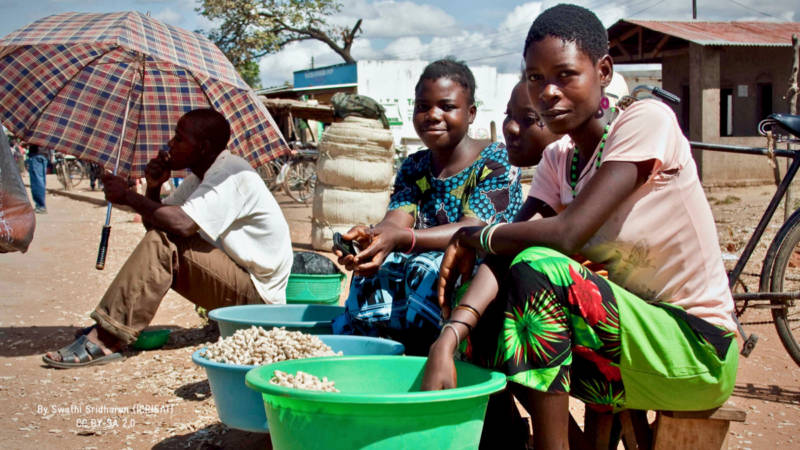The Impacts of Climate Change Adaptation on Youth Employment and Migration in Africa
Forthcoming policy brief by the Potsdam Institute for Climate Impact Research to showcase solutions

Women in Salima District, Malawi, selling groundnuts they boiled at home
Adaptation measures to climate change can cushion the anticipated impacts. Plus, they present an opportunity to create new types of employment which results in economic growth and they protect potential migrants. The forthcoming policy brief will showcase state of the art solutions based on a review of literature and evidence from GIZ projects in Africa.
Among the most promising adaptation options are post-harvest management, irrigation along with water harvesting, electrification, crop suitability adjustments, as well as risk transfer through crop insurance. The policy brief will be available at the SNRD Africa website from November 2019.
Stefanie Wesch of the Potsdam Institute for Climate Impact Research is doing the research for the policy brief and is writing the copy — commissioned by GIZ on behalf of BMZ.
Background
Many African countries are extremely vulnerable to the biophysical impacts of climate change, which is accompanied by cascading social and economic effects.
Climate change is already causing net negative impacts on jobs and work productivity in Africa — and these impacts are expected to become more pronounced in the coming decades. This will be true for outdoor occupations in particular which are common in the agricultural sector. Labourers there will be the first to feel increasingly unbearable heat stress.
Climate change might lead to a great loss of jobs while on the other hand millions of youth newly enter the labour market every year.
The impacts of climate change on employment could range from modest to severe, even within the coming three decades. The severity heavily depends on how fast the world succeeds in reducing global greenhouse gas emissions from fossil fuels in the coming years.
Weather shocks can also make internal migration more salient, creating population pressure in larger cities and may be accompanied by adverse effects for both the migrant communities and the local population. Lowlands will generally be more affected than the highlands.

